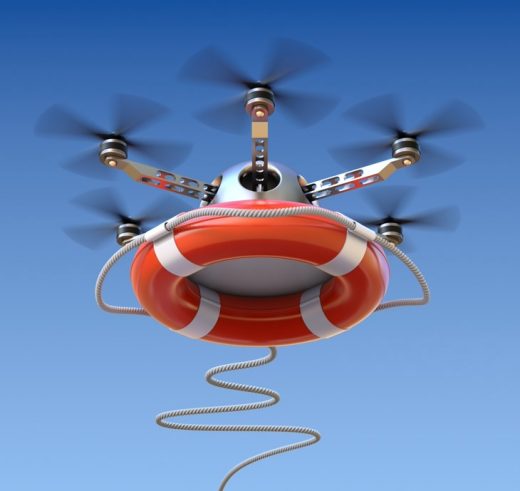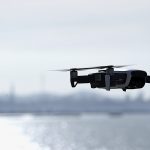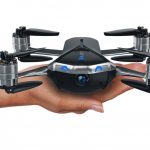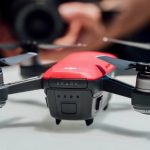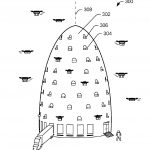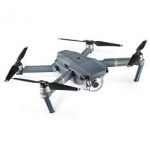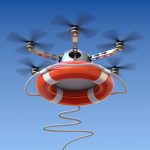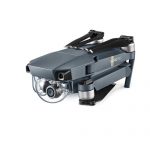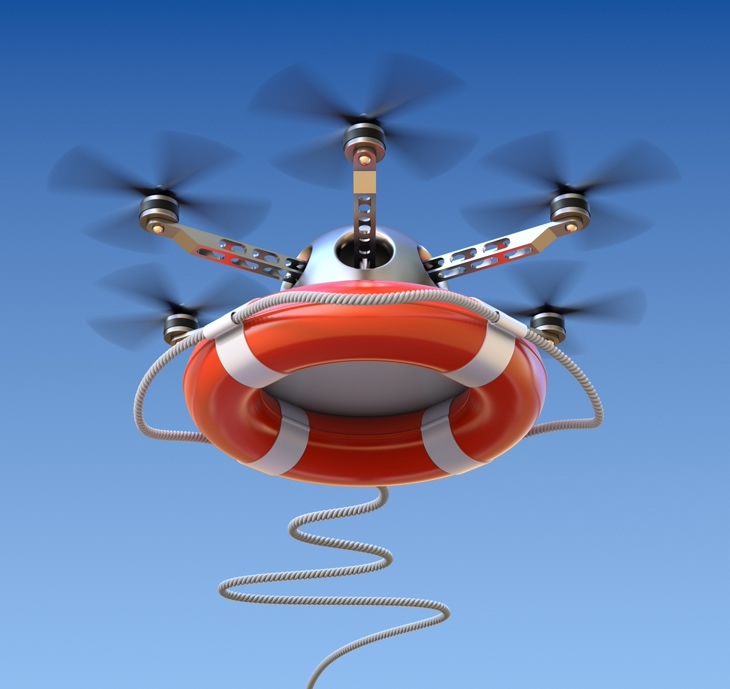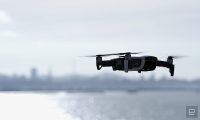Mo’ drones, mo’ problems that need drone insurance
Mo’ drones, mo’ problems that need drone insurance

The use of drones is evolving from their role in military strikes to support, commercial and recreational roles around the world. These include the use of drones as first responders in Denmark for firefighting, chemical accidents and larger car accidents in urban and over-water environments, shark harvesting in Australia, delivering medical aid in Rwanda and in tests by German lifeguards for sea rescue drowning scenarios.
Then there’s the intended drone delivery services planned by online retailers such as Amazon and the bizarre stunt to deliver beef jerky by drone. Not to mention that almost every start-up tech conference will have a low flying drone or two observing the action.
It would be fair to say that the potential applications of drones in our daily lives are only limited by our imagination. But as the commercial application of drones expands on an almost daily basis we can see evidence of a legal and regulatory minefield that is struggling to keep up with the evolution of drone technology

Setting laws for hobby and commercial drones
The Federal Aviation Authority (FAA) published new regulations in August pertaining to the commercial use of drones. Previously commercial drone operators needed to have a sports pilots license or higher. Now, all you have to do is pass a new aeronautical exam. Under the new rules, operators can’t fly drones higher than 400 feet or at night. The drones must also weigh under 55 pounds and must remain in the visual sight of a human operator — something that prohibits any kind of long-distance drone use, including even the most basic delivery drones. Commercial drones will also only be allowed to operate during daylight hours or civil twilight. Also disallowed are any operations from a moving vehicle — unless you are in a “sparsely populated area.”
Hobbyist and recreational drone users are required to register their drone with the FAA (a mere $ 5 for 3 years) and adhere to some fairly common sense rules consistent with that of commercial drones like remaining in site of the drone, avoiding aircraft, sports stadiums and emergency response scenarios and not flying under the influence of drugs or alcohol.
A technology ripe for insurance claims
However as the use of drones expands, so does the need for insurance. I recently spoke with Sentil Rajamanickam, FSI Strategy & Operations Manager at data analytics company InfoGix about the challenges of underwriting drone insurance. He explained:
“Today, drone insurance underwriting is based on a geospatial map used to determine the likelihood that a drone will have a safe flight. Simply basing underwriting on geospatial mapping can wrongfully calculate the risk of an accident. What if unexpected weather hits or a temporary structure (e.g. construction equipment) gets in the way that isn’t picked up by the mapping?
One inherent flaw we’ve observed with non-traditional insurance, like drone insurance, is that it tends to be driven by past data. Past data doesn’t always accurately predict the future and when something unpredictable happens there is a higher probability of very large losses.”
One way to offset such unpredictable, complex risk underwriting is to leverage risk models that are based on the statistical data across a particular region or country and that constantly correlate risk events with pricing. The challenge for underwriters is that they are limited by the data available for such complex underwriting analysis due to non-scalable management information systems or core systems that cannot support complex data requirements.
The somewhat contradictory situation is that drone insurance metrics can be improved by increased drone flights, where drone users fly drones which record flight paths, height, speed, aerial mapping etc. and can be used as a leverage for the price point of insurance or as a precedent of good ‘flying’ history in the case of future litigation.
Are hobbyists just waiting to get sued?
Rajamanickam cautions that many recreational users may not be aware of the regulations such as the need to register and weight and aerial height regulations and note that “as recreational users are slowly increasing there’s a real need to educate them.” Retailer Best Buy, has posted safety brochures in more than 1,000 stores and Amazon posts links to the Know before you fly website in its retail section. But it’s easy to imagine scenarios where an errant drone user operates the drone upon receipt on their birthday morning only to cause havoc with a neighbour’s garden, pets, windows or small children. Could a scary scenario, during Halloween this year result in a lawsuit of emotional distrust? Maybe add a clown or two.
Then of course, there’s the potential for breaches of privacy just waiting for those who operate drones with filming capabilities. In terms of privacy protection on a national level, there are the Voluntary Best Practice Guidelines issued by the National Telecommunications and Information Administration (NTIA).
They essentially warn drone operators to give notice before flying, to secure data that is collected and don’t share it and comply with state and local laws. Note that these are as of yet, only voluntary guidelines. Yet this could potentially be the biggest catalyst for potential lawsuits, particularly against commercial drone companies who undertake aerial surveillance and filming.
The reality is that the insurance needed by drone operators will evolve as our range of drones and use expands. If you’re planning on buying a drone as a gift for a loved one this Christmas, adding an insurance policy might not be a bad idea.
The post Mo’ drones, mo’ problems that need drone insurance appeared first on ReadWrite.
(20)

